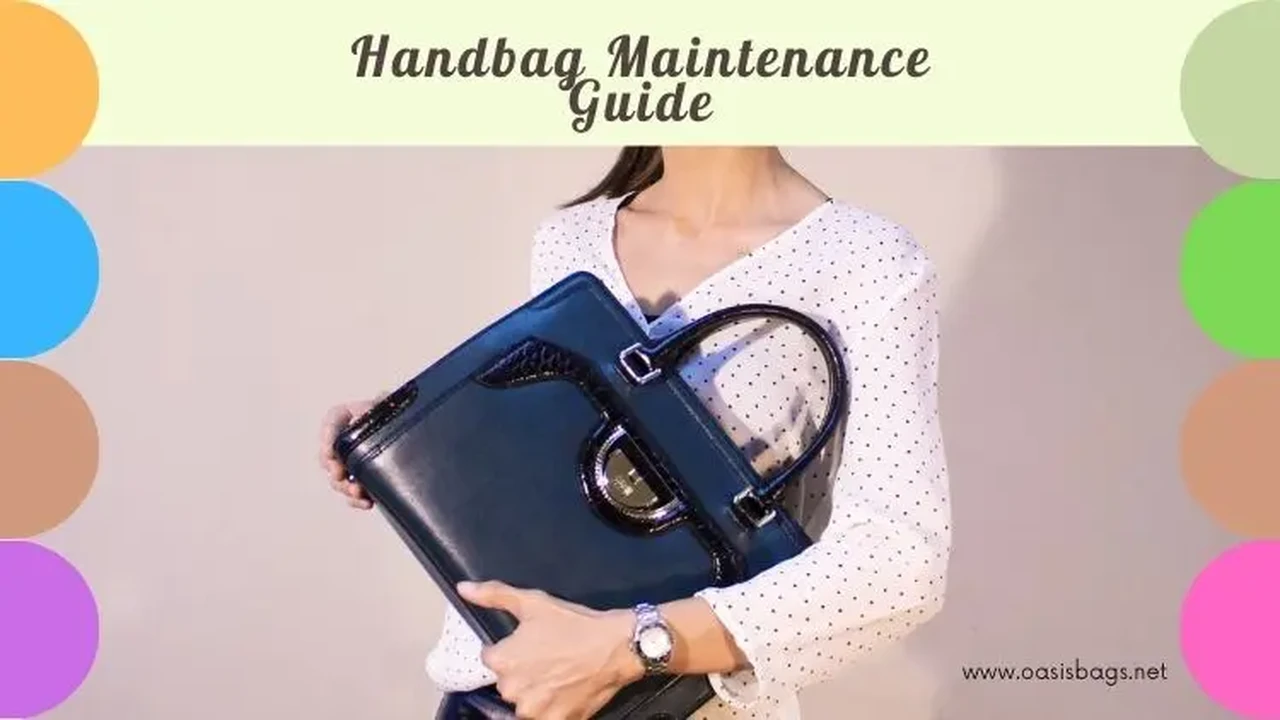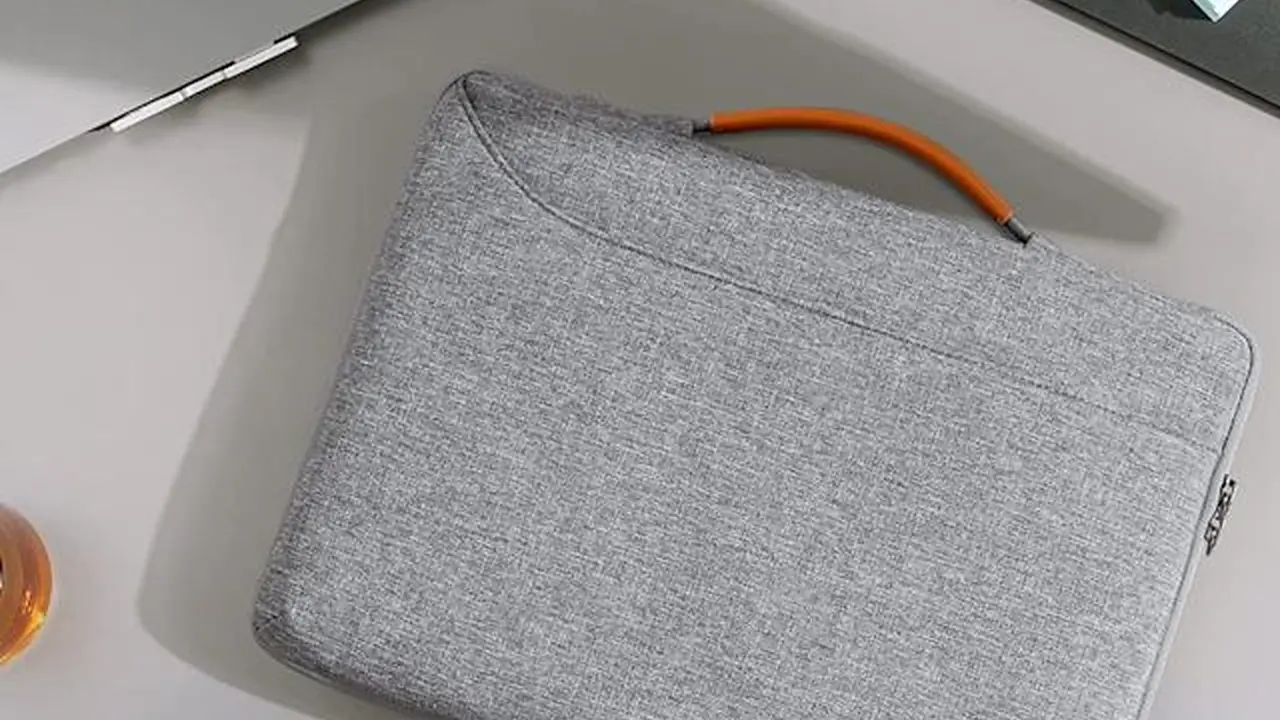Handbag Care Tips
Explore the world of handbag materials. This guide details common fabrics, leathers, and synthetics used in handbag construction. Learn about durability, care, and ideal uses for each material to make informed buying decisions.

General Handbag Care: Keeping Your Bags Looking Their Best
Okay, let's talk about keeping those gorgeous handbags of yours in tip-top shape! We all love our bags, right? They’re like little extensions of ourselves, carrying our lives around. But just like anything we love, they need a little TLC to stay looking their best. Think of it as a mini-spa day for your bags!
First things first: prevention is key. Before you even *use* your new bag, consider giving it a protective spray. There are tons of fabric and leather protectors out there that can help shield against stains, water damage, and everyday wear and tear. It's like a little force field for your precious cargo!
And when you’re not using your bag, don’t just toss it in a heap. Give it a proper home! Stuff it with acid-free tissue paper (or even old t-shirts) to help it maintain its shape. Then, pop it into a dust bag. Dust bags are like little sleeping bags for your handbags, protecting them from dust, scratches, and sunlight. If you don't have a dust bag, a pillowcase works in a pinch!
Cleaning Different Handbag Materials: Leather, Fabric, and Synthetics
Now, let’s get down to the nitty-gritty: cleaning! Each type of material needs a different approach, so let’s break it down.
Leather Handbag Care and Cleaning Tips
Leather is luxurious, but it can be a bit finicky. For everyday cleaning, a soft, slightly damp cloth is your best friend. Just gently wipe down the surface to remove any dust or dirt. Avoid using harsh chemicals or abrasive cleaners, as they can strip the leather of its natural oils and cause damage. Think gentle! Think loving!
For more stubborn stains, you can try a leather cleaner specifically designed for handbags. Always test it on a small, inconspicuous area first to make sure it doesn't discolor the leather. And remember, less is more! Apply a small amount of cleaner to a soft cloth and gently rub it into the stain. Then, wipe away any excess cleaner with a clean, damp cloth.
Once you’ve cleaned your leather bag, it’s important to condition it. Leather conditioner helps to replenish the oils that are lost during cleaning, keeping the leather soft and supple. Apply a small amount of conditioner to a soft cloth and gently rub it into the leather. Let it absorb for a few minutes, then buff away any excess with a clean cloth. It's like giving your leather bag a moisturizing treatment!
Product Recommendation: Chamberlain's Leather Milk Leather Care Liniment No. 1. This is a highly-rated leather conditioner that's gentle and effective. You can find it on Amazon for around $20.
Scenario: Your favorite leather tote bag gets caught in a light rain shower. Don't panic! Blot the water off immediately with a clean, dry cloth. Then, let the bag air dry away from direct heat. Once it's dry, condition it to prevent the leather from becoming stiff.
Fabric Handbag Care and Cleaning Tips
Fabric handbags are generally easier to clean than leather, but they can still be prone to stains. For everyday cleaning, you can use a soft brush or a lint roller to remove any loose dirt or debris. For more stubborn stains, you can try spot cleaning with a mild detergent and water.
Again, test the cleaning solution on a small, inconspicuous area first to make sure it doesn't discolor the fabric. Apply a small amount of cleaning solution to a soft cloth and gently blot the stain. Avoid rubbing, as this can spread the stain. Then, blot away any excess cleaning solution with a clean, damp cloth.
For canvas bags, you can sometimes get away with washing them in the washing machine on a gentle cycle. However, always check the care label first! And be sure to air dry the bag completely to prevent mildew.
Product Recommendation: Tide To Go Instant Stain Remover. This pen is a lifesaver for those unexpected coffee spills or makeup smudges. You can find it at most drugstores for around $5.
Scenario: You're carrying your favorite canvas tote bag to the beach and it gets a little sandy. Simply shake out the bag to remove any loose sand. Then, use a damp cloth to wipe away any remaining sand or dirt.
Synthetic Handbag Care and Cleaning Tips
Synthetic handbags, like those made of nylon or PVC, are generally the easiest to clean. You can usually just wipe them down with a damp cloth. For more stubborn stains, you can use a mild detergent and water.
Avoid using harsh chemicals or abrasive cleaners, as they can damage the synthetic material. And be sure to air dry the bag completely to prevent mildew.
Product Recommendation: Mr. Clean Magic Eraser. This little sponge is amazing for removing scuff marks and stains from synthetic materials. Just be gentle! You can find it at most grocery stores for around $3.
Scenario: Your PVC crossbody bag gets a little muddy after a walk in the park. Simply wipe it down with a damp cloth. For any stubborn mud stains, you can use a Mr. Clean Magic Eraser.
Specific Stain Removal Tips: Ink, Makeup, and Food
Okay, let's tackle some of the most common handbag stains: ink, makeup, and food. These can be tricky, but with the right approach, you can often remove them without causing permanent damage.
Removing Ink Stains from Handbags
Ink stains are the bane of every handbag lover's existence! If you catch the stain early, you might be able to blot it away with a clean, dry cloth. Avoid rubbing, as this can spread the stain.
For more stubborn ink stains, you can try using rubbing alcohol. Dab a small amount of rubbing alcohol onto a cotton swab and gently blot the stain. Be careful not to saturate the area, as this can damage the material. Then, blot away any excess rubbing alcohol with a clean, damp cloth.
Important Note: Always test rubbing alcohol on a small, inconspicuous area first to make sure it doesn't discolor the material.
Removing Makeup Stains from Handbags
Makeup stains are another common culprit. For powder-based makeup, you can try using a soft brush to gently brush away the excess powder. For cream-based makeup, you can try spot cleaning with a mild detergent and water.
For lipstick stains, you can try using a makeup remover wipe. Gently blot the stain with the wipe, being careful not to rub. Then, blot away any excess makeup remover with a clean, damp cloth.
Removing Food Stains from Handbags
Food stains can be tricky, as they can often leave behind a greasy residue. For fresh food stains, try blotting them up immediately with a clean, dry cloth. For more stubborn food stains, you can try spot cleaning with a mild detergent and water.
For greasy stains, you can try using a dry cleaning solvent. Dab a small amount of dry cleaning solvent onto a cotton swab and gently blot the stain. Be careful not to saturate the area, as this can damage the material. Then, blot away any excess dry cleaning solvent with a clean, damp cloth.
Handbag Storage: Keeping Your Bags Organized and Protected
We talked about prevention, we talked about cleaning, now let’s talk about storage! Proper storage is crucial for maintaining the shape and integrity of your handbags.
As we mentioned earlier, stuffing your handbags with acid-free tissue paper or old t-shirts is a great way to help them maintain their shape. Then, pop them into dust bags to protect them from dust, scratches, and sunlight.
If you have a lot of handbags, you might want to consider investing in a handbag organizer. There are tons of different types of organizers available, from hanging organizers to shelf organizers. Choose one that fits your space and your needs.
Product Recommendation: MISSLO Handbag Organizer Purse Storage. This hanging organizer is perfect for closets and keeps your bags visible and easily accessible. You can find it on Amazon for around $25.
Avoid storing your handbags in direct sunlight or in humid environments, as this can cause them to fade or mildew. And be sure to rotate your handbags regularly so that they don't get crushed or misshapen.
Specific Product Recommendations and Comparisons
Let's look at some specific examples to help you choose the right products for your handbag care routine.
Leather Cleaner Comparison: Apple Brand Leather Care vs. Leather Honey
Apple Brand Leather Care: This is a gentle, water-based cleaner that's great for everyday use. It's effective at removing dirt and grime without stripping the leather of its natural oils. It's also relatively affordable, at around $15 for an 8-ounce bottle.
Leather Honey: This is a more intensive cleaner and conditioner that's great for restoring older or damaged leather. It's a bit more expensive, at around $20 for an 8-ounce bottle, but it's worth the investment if you want to keep your leather bags looking their best for years to come.
Recommendation: For everyday cleaning, Apple Brand Leather Care is a great choice. For more intensive cleaning and conditioning, Leather Honey is the way to go.
Fabric Protector Comparison: Scotchgard Fabric Protector vs. Vectra Fabric Protector
Scotchgard Fabric Protector: This is a classic fabric protector that's been around for years. It's effective at repelling water and stains, and it's relatively affordable, at around $10 for a 10-ounce can.
Vectra Fabric Protector: This is a newer fabric protector that's designed to be more environmentally friendly. It's also effective at repelling water and stains, and it's a bit more expensive, at around $15 for a 10-ounce can.
Recommendation: Both Scotchgard and Vectra are great choices for protecting your fabric handbags. If you're concerned about the environment, Vectra is the better option.
Price Considerations for Handbag Care Products
The price of handbag care products can vary widely, depending on the brand, the type of product, and the size of the container. Generally, you can expect to spend anywhere from $5 to $30 on a single handbag care product.
It's important to choose products that are both effective and affordable. Don't be afraid to experiment with different brands and types of products to find what works best for you and your handbags.
Southeast Asia Considerations for Handbag Care
Living in Southeast Asia presents unique challenges to handbag care, primarily due to the high humidity and intense heat. These conditions can accelerate the degradation of materials and promote the growth of mold and mildew.
Humidity Control: Invest in dehumidifiers for your storage areas to keep humidity levels low. Silica gel packets placed inside handbags can also help absorb excess moisture.
Air Circulation: Ensure good air circulation in your storage areas to prevent moisture buildup. Avoid storing handbags in airtight containers.
Sunlight Protection: Direct sunlight can fade colors and damage materials. Store handbags away from direct sunlight or use UV-protective dust bags.
Regular Cleaning: Clean handbags more frequently to remove dust, dirt, and sweat, which can attract mold and mildew in humid conditions.
By following these tips, you can keep your handbags looking their best, no matter where you live!
:max_bytes(150000):strip_icc()/277019-baked-pork-chops-with-cream-of-mushroom-soup-DDMFS-beauty-4x3-BG-7505-5762b731cf30447d9cbbbbbf387beafa.jpg)





